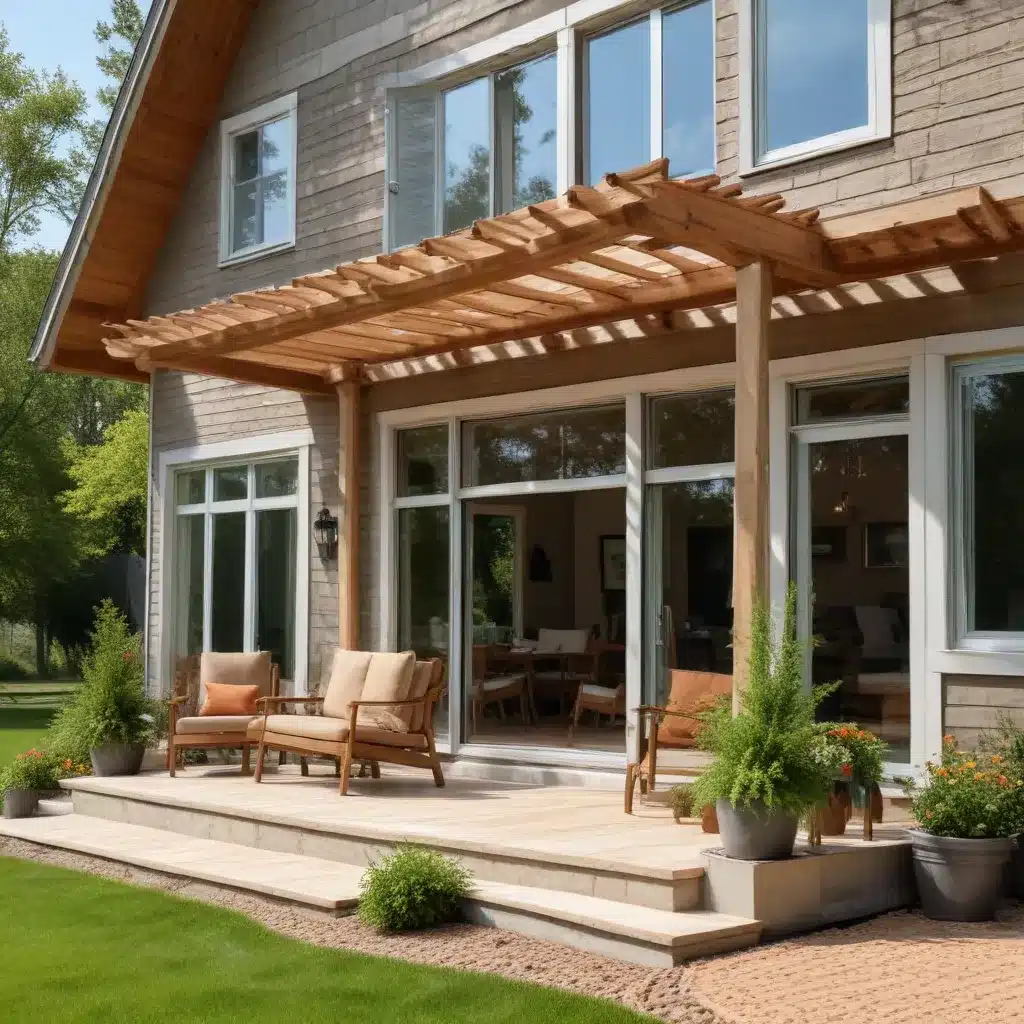
Optimizing Your Home for Year-Round Comfort and Energy Savings
As a seasoned construction professional and interior designer, I’ve seen firsthand the transformative impact that thoughtful home renovations can have on a property’s comfort, efficiency, and overall livability. Whether you’re tackling a major overhaul or focusing on targeted upgrades, balancing seasonal considerations is key to achieving a sustainable, high-performing home.
In this comprehensive guide, I’ll share practical tips and in-depth insights to help you navigate the world of sustainable seasonal home renovations. We’ll explore passive solar design principles, strategies for optimizing HVAC systems, and smart interior design solutions – all with the goal of creating a comfortable, energy-efficient living environment that adapts seamlessly to the changing demands of each season.
Understanding Passive Solar Design
At the heart of any sustainable home renovation lies the principles of passive solar design. By taking advantage of a building’s site, climate, and materials, passive solar design minimizes energy use for heating and cooling. According to the U.S. Department of Energy, the first step is to prioritize energy efficiency through strategic upgrades, then meet the reduced heating and cooling loads using solar energy.
One of the key elements of passive solar design is proper placement and sizing of south-facing windows. These windows allow the sun’s energy to enter the home during the winter, providing free heat. However, it’s crucial to ensure these windows are appropriately shaded during the spring and fall to prevent overheating and increased cooling loads. Carefully considering factors like the home’s site, climate, and potential future obstructions can help you strike the right balance.
Thermal mass, such as masonry floors and walls, plays a vital role in passive solar design. These materials absorb and store the sun’s heat during the day, then gradually release it into the living spaces at night as the home cools. The ideal ratio of thermal mass to glazing will vary depending on your local climate.
Passive solar design also incorporates strategies for summer comfort, such as using overhangs, awnings, or trellises to block unwanted solar gain. Landscaping can also contribute to maintaining a comfortable indoor environment throughout the year.
Optimizing HVAC Systems for Seasonal Efficiency
Once you’ve addressed the passive solar design elements, it’s time to turn your attention to the mechanical systems that keep your home comfortable. Ensuring your HVAC equipment is properly sized, balanced, and maintained is crucial for seasonal performance.
According to the Greenbuild Advisor, a common issue in multi-story homes is the uneven distribution of heated or cooled air, with the upper levels often feeling warmer or cooler than the lower levels. This can be a frustrating challenge, but there are several strategies to address it:
- Duct Balancing: Installing manual dampers in the ductwork can allow you to fine-tune the airflow to different zones, helping to even out temperatures. This approach is often more cost-effective than undertaking a complete duct rework.
- Thermostat Zoning: Utilizing a smart thermostat with multiple sensors can help average out the temperatures in your home, rather than relying on a single thermostat location.
- Blower Upgrades: Replacing an older, less efficient blower motor with a high-performance ECM (Electronically Commutated Motor) can improve airflow and distribution, especially when coupled with other optimization measures.
While duct booster fans may seem like a tempting solution, experts generally advise against them, as they can create more problems than they solve. The better approach is to address the root causes of airflow imbalances through thoughtful duct design, sealing, and balancing.
Enhancing Indoor Air Quality and Comfort
Beyond the HVAC system, sustainable home renovations should also prioritize indoor air quality and overall comfort. Balanced Architecture’s floor plan fix demonstrates how thoughtful space planning and layout adjustments can positively impact a home’s livability.
Simple design tweaks, such as strategically placing windows, modifying room configurations, or adding dedicated ventilation zones, can make a significant difference in how a home functions. By addressing issues like poor air circulation, inadequate natural lighting, or underutilized spaces, you can create a healthier, more comfortable living environment.
Additionally, EcoHome’s advice on air sealing and pressure balancing underscores the importance of maintaining proper air pressure within a home. Ensuring a well-sealed building envelope and a balanced ventilation system can help prevent issues such as drafts, moisture problems, and inefficient energy use.
Integrating Sustainable Design Elements
When embarking on a home renovation project, it’s an opportune time to incorporate sustainable design elements that enhance both comfort and efficiency. From high-performance windows and insulation to renewable energy systems, there are numerous ways to future-proof your home while creating a more comfortable living space.
One particularly effective strategy is to leverage the power of natural ventilation during the warmer months. By strategically placing operable windows, installing awnings or overhangs, and promoting cross-ventilation, you can often maintain a comfortable indoor environment without relying solely on air conditioning.
Additionally, thoughtful material selection can play a significant role in a home’s overall performance. Opting for low-embodied-carbon materials, utilizing recycled or reclaimed resources, and choosing products with high thermal mass or insulating properties can all contribute to a more sustainable, energy-efficient renovation.
Conclusion: Embracing Holistic, Seasonal Considerations
Sustainable home renovations are not a one-size-fits-all approach. By considering the unique needs and characteristics of your home, as well as the local climate and seasonal demands, you can create a living environment that is both comfortable and energy-efficient year-round.
Whether you’re tackling a comprehensive overhaul or targeting specific upgrades, the key is to take a holistic, integrated approach that addresses passive solar design, HVAC optimization, indoor air quality, and sustainable design elements. By doing so, you’ll not only enhance the comfort and livability of your home but also contribute to a more sustainable future.
To learn more about Local Builder London’s comprehensive renovation services and sustainable building expertise, I encourage you to explore our website or reach out to our team. Together, we can transform your home into a true oasis of comfort and efficiency, tailored to the rhythms of the seasons.


